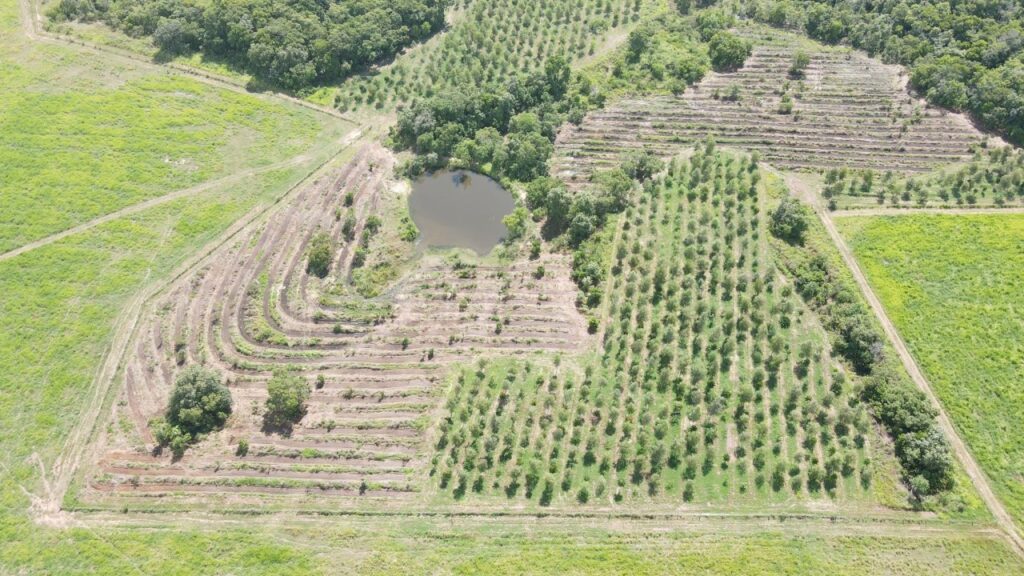Lately, I’ve been reflecting deeply on a paradox that seems to persist: why are investors more risk-averse when it comes to nature-based investments or investments in assets that have a direct link to nature, than to companies indirectly dependent on nature, whose business model is intrinsically focused on extracting value from nature?
This question keeps coming back to me, especially as we face growing environmental, social, and economic uncertainties. Our perception of risk often leads us in directions that aren’t necessarily aligned with long-term value, and we are increasingly finding it difficult to have a holistic understanding of scenarios and indirect consequences.
It’s also becoming more common to overvalue short-term risks over long-term risks, giving more importance to short-term volatility, commodity prices, and annual productivity than to the possibility that, in the end, the business-as-usual approach—such as an agricultural system that resembles a mining operation—could lead to a decline in soil health, increasing input requirements, and shrinking margins, until the asset becomes a stranded asset.
To make the fact even more tangible, another clear example is the case of COVID-19. Despite some efforts in biosafety and biocontainment by countries since then, we haven’t seen any discussions about how prepared we are for a new pandemic (or any other major climate catastrophe, as they are becoming more and more frequent).
This would have been unimaginable in March 2020, when we were in the midst of four circuit breakers and the U.S. GDP contracted by 3.4%—the worst annual drop since 1946. Despite this, we learned to ignore the risks, the importance of vaccines, and I don’t see this pandemic scenario (which could be even worse) considered material for buy- and sell-side analysts across different sectors (including those most affected by COVID, such as retail and airlines). I also don’t see it as a common scenario even when reading reports about Moderna and biotech companies, which helped us recover in a V-shaped manner after 2020 and had incredible profits in the following years.
In the past two weeks, another episode stirred panic in the market, with discussions around U.S. import tariffs and the uncertainty of potential material outcomes. Amid all this chaos, nothing is more reassuring than hearing or reading something smart and sensible—like the always incredible Howard Marks. In his last excellent memo, he highlighted a basic lesson: “Nobody Knows (Yet Again).”
He emphasizes the complexity of risk and how our reactions are often shaped by uncertainty:
- “The problem is that in the real world, and especially in economics, there are second- and third-order consequences that must be considered.”
- “In all spheres of economic activity, the more uncertain people feel, the more reticent they are to bear risk. In the less certain world we may be facing, people are likely to be loath to make decisions and enter into agreements, and they’ll probably offer to pay less for a unit of profit potential.”
I believe these statements apply, in a certain way, to nature-based investments. Our perception of risk tends to underestimate the second- and third-order effects of environmental degradation, while also overestimating the perceived operational risks of nature-based solutions. Ironically, many of the industries we view as “safe” are heavily dependent on unstable natural systems.
Understanding Nature-Related Risks
We often see nature-related risks as something fixed—a threat we should simply avoid. At the same time, many businesses and policymakers ignore the indirect risks that stem from changes in our natural environment. When it comes to operations directly tied to nature, our first instinct is to list a series of risks, as if nature were our enemy. But what if we chose instead to understand those risks and work with nature, transforming uncertainty into an opportunity for long-term success?
Ignoring Indirect Risks
Many companies tend not to give much thought to indirect risks. We often overlook how disruptions in natural systems—such as food supply interruptions or crop failures—can affect nearly every sector, including insurance, food, textiles, and banking. These “random” events can trigger wider economic shifts and fuel inflation, much like the ripple effects seen with tariffs and other short-term shocks. This lack of attention to indirect nature-related risks means that we miss opportunities to manage them proactively.
The Misguided View on Nature
It is striking that while leaders rarely address the indirect impacts of nature on their operations, they often treat the risks directly tied to nature as something static and inevitable. Consider events like a sudden egg supply disruption in the U.S. or unforeseen breaks in coffee production that cause cocoa prices to soar.
Instead of promoting lasting system-change initiatives that can protect the value chain in the long term, many organizations dismiss these risks. Despite some excellent corporate initiatives during times of crisis, such as the launch of sustainable or regenerative programs, these efforts often lose momentum once the shock has somewhat normalized.
As a result, they are not sustained as part of the company’s long-term business strategy, and shocks and supply risks become seen as “normal” and “intrinsic to the business.” This reactive stance leads to a narrow view that focuses on listing negative outcomes rather than exploring how working with nature could yield positive results.
A Different Approach in Upstream Farming Investments
In contrast, in the realm of farming and upstream investments, the risks from climate change are felt daily. Although the impact is immediate and clear in these sectors, the resulting fear can become paralyzing. If we continue to view nature only as a source of risk—focusing solely on the negative, the left tail of a risk curve—we overlook the potential benefits of a more cooperative approach. By rethinking our perspective, we open up the possibility of working with nature to achieve better outcomes.
Imagine a business model where outcomes follow a skewed normal distribution—one where the chance of positive returns outweighs the negatives. Rather than clinging to traditional approaches that extract and degrade natural resources, we can design models that partner with nature. Although there may be some initial uncertainty, aligning with nature can lead to steady, sustainable returns that benefit both the business and the environment.
Letting Nature Inspire Our Business Models
In a world driven by rapid technological change and short-term solutions, how we balance risk is more important than ever. Managing risk effectively doesn’t mean avoiding it entirely—it means choosing the right risks that open up long-term opportunities. By shifting our view of nature from that of an adversary to a partner, we can foster innovation, reduce vulnerabilities, and create business models that are resilient and sustainable.
In the same memo, Howard Marks also touches on comparative advantage, a theory by David Ricardo that has driven globalization and improved global welfare over the last decade:
- “The main benefit from globalization is called ‘comparative advantage.’ Every country has some things it produces better and/or cheaper, and others where the reverse is true. If every country makes the former products and sells them to the rest of the world, and buys the latter products from other countries, collective welfare is maximized thanks to increased overall efficiency.”
We are at a moment where we need to not only take into account the comparative advantage of each country in a traditional way considering mainly the direct cost, but also all hidden costs and risks related to all the stakeholders—including nature—and where and how we can partner with nature for long-term advantage through risk mitigation, operational efficiency, and even inspiration.
In today’s world dominated by AI, cognitive overload, and short-term thinking, perhaps nature can offer the wisdom we desperately need. It teaches us about cycles, balance, resilience, and long-term thinking—lessons that can transform our approach to business and investment. Risk appetite isn’t about eliminating risk—it’s about choosing the right risks and balancing them with long-term opportunities. When it comes to nature, we need to rethink what “risky” truly means.
Ignoring nature may just be the greatest risk of all.

➡️ Photo of a portion of the landscape restoration carried out by Luxor Agro on one of their farms.
